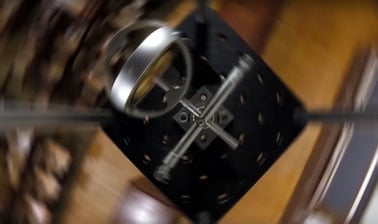The online jump simulations show us different situations in which the application of the laws of physics in jumps and falls can be verified.
Jumps and falls are common phenomena in the study of physics, and can be analyzed from several perspectives. From the point of view of mechanics, they can be studied using Newton’s laws of motion and the concepts of kinetic and potential energy.
When a person performs a jump, a downward force is applied against the ground to generate a reaction and propel him or her upward. During the jump, the kinetic energy of the body is converted into gravitational potential energy as it rises into the air. At the highest point of the jump, the potential energy is maximum and the kinetic energy is minimum. As the body falls downward, the potential energy is converted back to kinetic energy, and the body accelerates toward the ground under the action of gravity.
During a free fall, an object is dropped without any additional force acting on it other than gravity. According to Newton’s law of universal gravitation, the acceleration of an object in free fall is constant and is called acceleration due to gravity. On Earth, this acceleration approaches 9.8 m/s². The distance an object falls in a given time can be calculated using the equation for free fall:
d = 1/2 g t²,
where
d is the distance
g is the acceleration due to gravity
t is the time.
In addition to gravity, other factors can influence jumps and falls, such as air resistance, the shape of the object and applied external forces. These factors can modify the behavior of the moving object and affect its trajectory, velocity and time of fall.
These online jump simulations are very useful to understand the physical laws behind jumps and falls and the transformation between kinetic and potential energy that occurs.
Explore the exciting STEM world with our free, online simulations and accompanying companion courses! With them you'll be able to experience and learn hands-on. Take this opportunity to immerse yourself in virtual experiences while advancing your education - awaken your scientific curiosity and discover all that the STEM world has to offer!
- Parachute
- Bungee I
- Bungee II
Parachute and terminal velocity
This animation reproduces what it is like to jump with a parachute. Observe what happens to the speed before and after opening the parachute. Can you explain what forces act in each case?
“Bungee jumping” without loss of energy
This simulation represents the jump of a person held by an elastic rope without loss of energy. When the fall begins, the person’s speed accelerates until the tension of the rope holds him/her and propels him/her upwards. Observe how the Gravitational Potential Energy (GPE), Kinetic Energy (KE) and Elastic Potential Energy (EPE) vary. Why doesn’t the movement stop?
“Bungee jumping” with loss of energy
This simulation represents the jump of a person held by an elastic rope with energy loss. When the fall begins, the person’s velocity accelerates until the tension of the rope holds him/her and propels him/her upwards. Observe how the Gravitational Potential Energy (GPE), Kinetic Energy (KE) and Elastic Potential Energy (EPE) vary. Why does the motion stop?
Physics courses


AP Physics 1



AP® Physics 1: Challenging Concepts



Circuits for Beginners



AP® Physics 1 – Part 1: Linear Motion



Mechanics, Part 2



Mechanics, Part 1



Dynamics and Control

Other courses


Circuits for Beginners



AP® Physics 2 – Part 3: Optics and Modern Physics



Introduction to Algebra



Quantum Mechanics for Scientists and Engineers 2



Chemical Thermodynamics I: Thermodynamics and Statistical Mechanics


Capstone Exam – Materials for Electronic, Optical, and Magnetic Devices



Advanced Fluid Mechanics 3: Potential Flows & Boundary Layers



The Radio Sky II: Observational Radio Astronomy




















